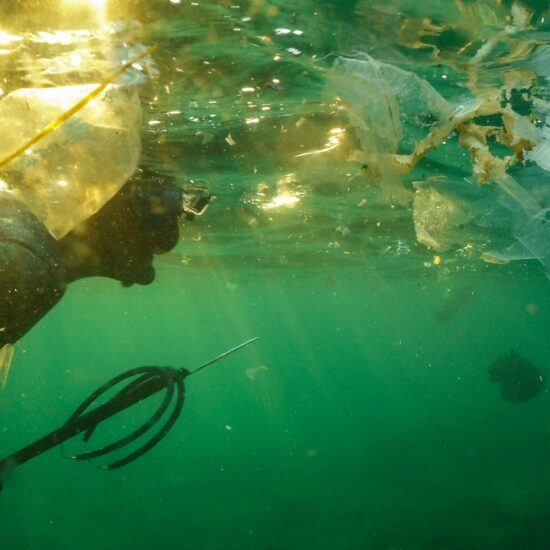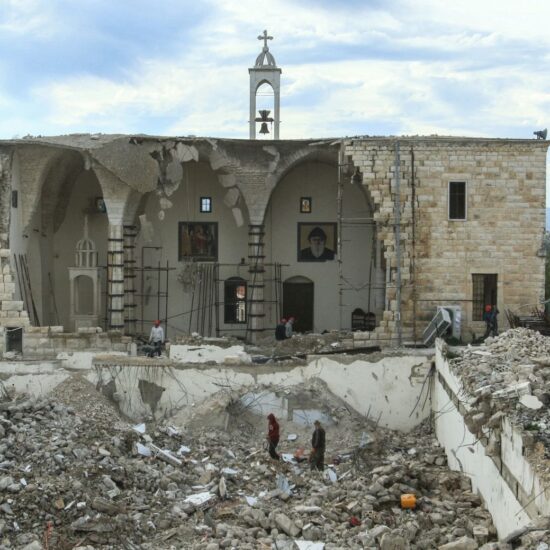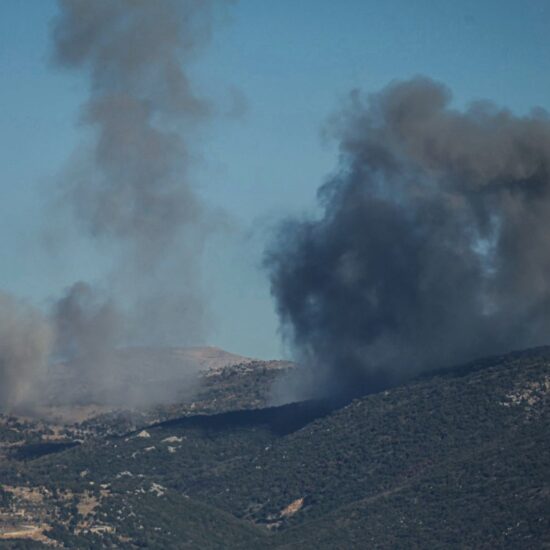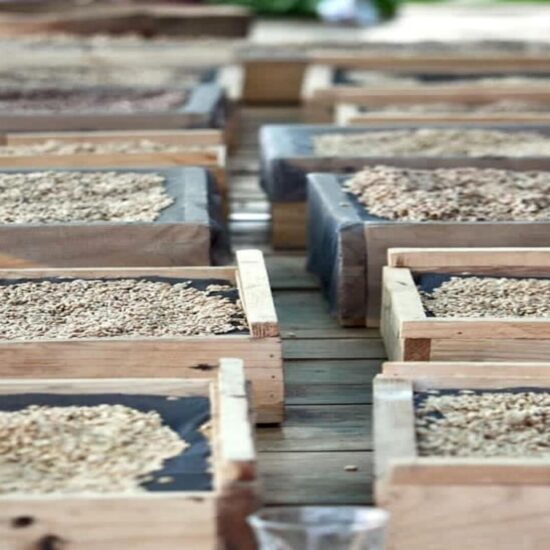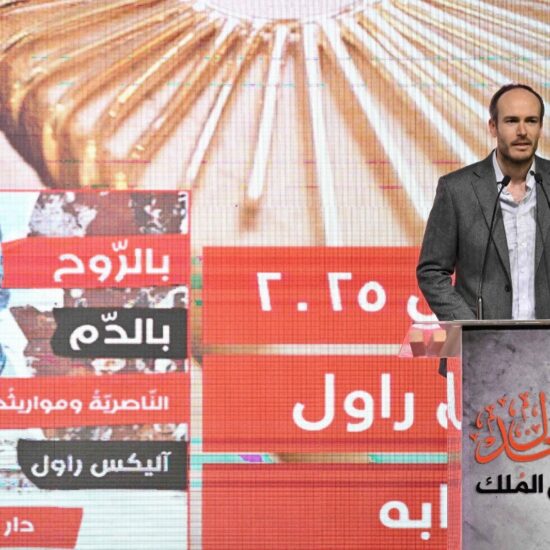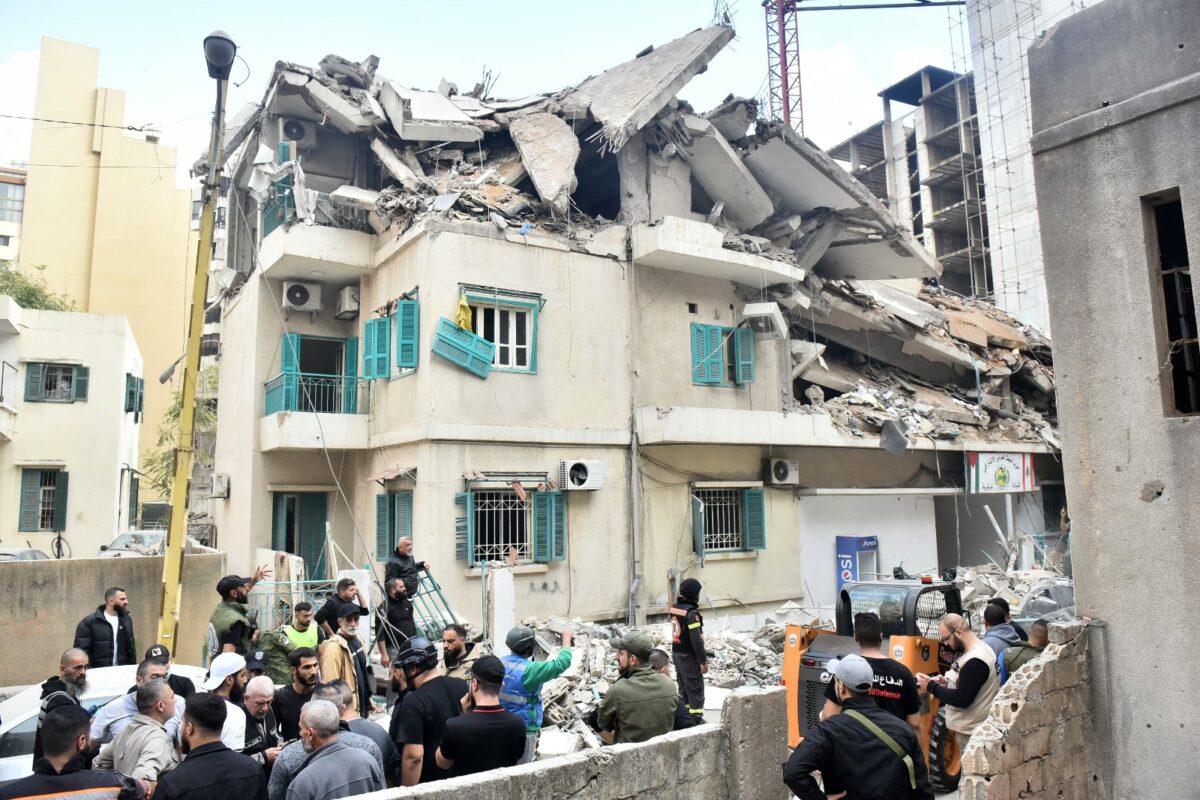
Israeli strike on the Syrian Baath party office in Ras al-Nabaa killed Hezbollah media chief Mohammad Afif, Multiple waves of Israeli strikes on Beirut’s southern suburbs, School closed until Tuesday in Beirut, Chouf, northern Metn, Baabda and Aley, Hopeless, starving, and besieged, international report denounces the cruelty of the Israeli onslaught on Gaza, Israel’s Smotrich calls for West Bank annexation in 2025, Lebanon’s Tyre under attack, Israeli strike on Lebanese civil defence centre in Baalbek killed 15 rescue workers, More UNIFIL positions targeted, At least 15 people killed in Israeli strikes on Damascus, A van carrying weapons intercepted by local residents in Rashaya, Israeli bombardment on Akkar house sheltering displaced kills 16, Lebanese and Syrians, Lebanon’s economic losses due to the war exceeded 5 billion dollars, World Bank reports, French court orders release of Lebanon’s revolutionary Georges Ibrahim Abdallah, Two flares were fired at Netanyahu’s house in Caesarea, three suspects arrested, Sudan is trapped in a nightmare, UN says
While the Israeli offensive on Lebanon increases in intensity, violence, and extension; while the extent of the damage of all kinds – humanitarian, infrastructural, social; while the heart of Beirut is bombed without evacuation orders; while the world still calls them ‘targeted attacks’ – the Israeli attacks on Hezbollah leaders, ignoring the rubble, the fear, the chains of displacement that those attacks leave behind – few optimists hope for the success of yet another diplomatic round to reach a cease-fire.
The plan discussed in these hours, which was received by the Speaker of the Lebanese Parliament, Nabih Berri, last Thursday, following a meeting with the American Ambassador to Lebanon, Lisa Johnson, envisages, in thirteen points and after a temporary sixty-day truce, during which Lebanon will deploy troops to the border, the withdrawal of Hezbollah troops and weapons north of the Litani river, with the Lebanese army and UN peacekeeping forces charged with ensuring that they do not return.
A plan that Trump himself reportedly approved, expressing the hope that this would be done before he enters the Oval Office next 20 January – along with the support of Teheran, as confirmed by Khamenei’s senior adviser, Ali Larijani, during his visit in Beirut on Friday.
However, as top Israeli officials have already and repeatedly expressed scepticism of potential truce deals, the recent and ongoing memory of Gaza should suffice as a reminder of how fallacious every step of the Netanyahu administration is towards the longed-for peace.
If not even in Gaza, with the Israeli interest – at least on the surface – in guaranteeing the hostages’ safe return, did voices for an end to the offensive resonate, and only more brutal violence followed last November’s temporary truce, it is unlikely that these will hold true in Lebanon, where the death toll is approaching 3,500, and the arrogance of IDF soldiers in the border areas is desecrating dozens of homes, villages, and memories.
Since then, of all the plans discussed to end hostilities in the Strip – accepted by Hamas, based on the American plan finalised at the end of May – it has always been Israel that has rejected, railed against, retracted: participating in cease-fire talks for more than a year, while changing its terms whenever a deadline approached, even if the proposal at hand was endorsed by its chief ally, the United States. And then blaming Hamas for not accepting the new conditions, all the while expanding its military assault in Gaza, which has now killed more than 43,700 people, displaced nearly its entire 2.3 million population and drawn accusations of genocide from UN bodies and experts.
Israel is now applying a similar strategy to Lebanon, where many analysts believe it is feigning diplomacy as it prepares to expand an indefinite war on the country, easened by the alliance of the Trump administration. On one side, Israel’s top general, Herzi Halevi, told reporters the army was drawing up plans to expand its campaign against Hezbollah; on the other, he claimed Israel was amping up diplomatic efforts to secure a truce. So that Israel will be able to say that they wanted peace, that they walked in the direction of peace, but Hezbollah did not: just as they’ve been doing in Gaza.
Even the position of Hezbollah, after the assassination of former leader Hassan Nasrallah, has been that, reasonable – within the limits of reasonableness of a party that makes armed resistance its identity, and which is unlikely to accept disarming under the terms imposed by the enemy, continuing to allow Israel to attack targets in southern Lebanon to ‘respond to future threats’ – to untie the terms of negotiations in Lebanon with the fate of Gaza.
And although it is unrealistic and unacceptable for Hezbollah to accept such terms, the reason why no one believes in cease-fire any more is not the ideology of the resistance parties, but Israeli double-dealing, the lack of political will – of the so-called ‘only democracy in the Middle East’ – for real peace. It will be enough, to understand this, to think of Gaza, to look at Gaza, to keep talking about Gaza.
In Lebanon
In the heart of the capital: On Sunday, November 17, an Israeli strike targeted an area between Ras al-Nabaa and Sodeco, right in the heart of Beirut. In a provisional toll, the Lebanese Health Ministry announced that the strike on Ras killed four people. The strike hit a neighbourhood where many people displaced from Beirut’s southern suburbs had been seeking refuge.
The attack killed Hezbollah’s media chief, Mohammad Afif, who was “by coincidence” in the building hit, according to statements by the secretary-general of the Syrian Baath, Ali Hijazi, to the Al-Mayadeen channel. He added that Afif had already received death threats through certain local and Arab media.
On the same day, in the evening, a second strike hit the western Beirut’s neighbourhood of Mar Elias, killing two people and injuring 22, according to an updated toll from the Ministry of Health. According to news outlet Nidaa al Watan, the strike targeted a Hezbollah official, Mahmoud Madi. The party has yet to make a statement about both the strike in Mar Elias, while it confirmed the killing of its media office, Mohammad Afif, in Ras al-Nabaa.
The Army’s response: Ali Hijazi also revealed to Al-Mayadeen that “a person recently arrested for spying for Israel confessed to having been in charge of filming the Baath Party and the Syrian Social Nationalist Party in Raouche” before the Israeli strike on Ras al-Nabaa. In another interview via Al-Jadeed TV, Hijazy blamed the Lebanese Army command for not having informed the Baath Party about the agent’s arrest, so that they could take precautions.
In a phone call with Beirut Time, a military source responded that, “with Israeli reconnaissance planes over the capital and filming without being deterred, there is no longer a need for a human to film. And if there is a question that should be asked, it is: who knew about Hajj Muhammad Afif’s presence in the Baath Party headquarters, especially since the party’s leader, Mr. Hijazi, confirmed in the media that the building was empty of civilians and only contained the party’s offices and members?”.
In another statement, the Army Intelligence Directorate announced that the Syrian national investigated for “collecting information for the benefit of the Israeli enemy,” in addition to his involvement in “fraud, deception and forgery,” was taken to the competent judiciary. The investigation, moreover, revealed that he was not working within the city of Beirut, and that he was not tasked with collecting information about any party’s offices there.
Strikes on Beirut: After days of intense attacks on the capital, Israeli bombardment flattened five buildings in Beirut’s southern suburbs on Friday, including one near one of the capital’s busiest traffic junctions, Tayouneh. Video showed a building being struck and turning into a cloud of rubble and debris that billowed into Horsh Beirut, the city’s main park.
The Israeli military said its fighter jets attacked munitions warehouses, a headquarters and other Hezbollah infrastructure. It issued a warning on social media identifying buildings ahead of the strikes.
Similarly, on Saturday, a new strategy of bombardments was carried out by Israeli warplanes against Dahieh, usually bombed at night, while this time the southern suburbs were struck all day long, at a distance of hours.
The Israeli army’s Arabic-language spokesman, Avichay Adraee, claimed on social networks that the Israeli air force had targeted “50 Hezbollah targets” in Beirut’s southern suburbs over the past week. He claims that a strike carried out on Saturday destroyed a building where former Hezbollah leader Hassan Nasrallah, assassinated on September 27, previously lived. Nasrallah had been targeted in this building during the second Lebanon war in 2006, according to the spokesman, who claims that it had meanwhile been rebuilt and was being used “for terrorist purposes.”
School closed: Caretaker Education Minister Abbas Halabi on Sunday evening called on schools, public and private universities to suspend in-person classes on Monday and Tuesday in the districts of Beirut, Chouf, northern Metn, Baabda and Aley.
Tyre under attack: A number of airstrikes was reported on Saturday in the southern city of Tyre, in a neighbourhood near historical ruins listed as a UNESCO world heritage site. “The raid on Tyre targeted the ‘ruins district’, resulting in the destruction of two buildings and damage to other surrounding buildings,” the official National News Agency said, referring to a neighbourhood near Tyre’s ancient hippodrome.
On the same day the Israeli army, through its Arabic-language spokesperson Avichay Adraee, issued evacuation warnings to the inhabitants of fifteen whole villages in southern Lebanon. Such broad warnings, already used several times by the Israeli army against the population of southern Lebanon and many areas of Gaza, are often criticised by human rights organisations and even the US government as tools of forced displacement. The villages that have been told to evacuate include Kfar Hammam, Kfar Shuba, Burj al-Moulouk, Khiam, Blat, Dibbein, Arnoun, Yohmor, Deir Seriane, Taybeh, Kossaibeh, Kaouthariyet al-Rez, Kfar Tebnin, Homeiri and Matriyet Shumar.
The massacre of rescue workers: An Israeli airstrike on an emergency response centre in north Beqaa on Thursday, November 14, killed at least 15 rescue workers, officials say, in one of the deadliest attacks of its kind involving Lebanese emergency responders in the war.
The strike in Douris, near the city of Baalbek, destroyed a building of the civil defence agency, which is linked to the Lebanese government and not affiliated with Hezbollah. The regional governor, Bachir Khodr, said the victims included the city’s civil defence chief, Bilal Raad.
The Israeli military has not commented on the attack, which was described by the Lebanese health ministry as “barbaric,” and strongly condemned by the European Union. “Attacks on healthcare workers and facilities are a grave violation of international humanitarian law,” EU foreign policy chief Josep Borrell said on X.
In the southern Nabatieh region, another Israeli air strike on Thursday destroyed the civil defence centre in the town of Arab Salim, killing six people, including five paramedics, the Lebanese state news agency NNA reported; while later on Sunday, another Israeli drone carried out a strike on a team of rescue workers from the Islamic Health Committee, affiliated with Hezbollah, in Hanawai, in the district of Tyre: a paramedic was killed and two others injured.
According to Lebanon’s health ministry, at least 192 emergency and health workers have been killed in Israeli air strikes across the country since the escalation of the conflict with Hezbollah in mid-September.
Targeting shelters: The death toll from last Monday night’s Israeli strike on a shelter house in Ain Yaacoub, Akkar, has risen to 16, according to information from Civil Defense. Twelve Lebanese and four Syrians were killed in the attack, which struck a region previously spared by Israeli raids. About 15 others were injured, some critically, including eight members of the same family.
Akkar was targeted for the first time about ten days before, with two strikes on roads near Akroum, close to the Syrian border. These strikes caused significant damage to the roads but resulted in no casualties.
The northern Lebanese house had been sheltering at least 33 people, including 9 Syrian nationals and 24 Arab Salim residents forced out of Nabatieh by ongoing Israeli bombardments.
Only the day before, on Sunday, another Israeli airstrike – reportedly targeting and killing a Hezbollah member – killed 23 people, including seven children, who were forcibly displaced to a house in Aalmat, Jbeil. The two consecutive strikes on houses sheltering displaced people follow similar attacks in Aito, Zgharta, which killed 24 people, and Barja, Chouf, which killed 20 people.
Yet another cease-fire proposal: This comes amid renewed international efforts for a cease-fire, with American officials delivering the first official proposal of a deal to Lebanese authorities. The US Ambassador to Lebanon had in fact presented a draft cease-fire proposal to Lebanon’s Parliament Speaker Nabih Berri on Thursday, endorsed by Hezbollah to negotiate and meet the senior Iranian official Ali Larijani on Friday.
Meeting with Larijani, Lebanon’s caretaker Prime Minister Najib Mikati urged support for Lebanon’s position on implementing 1701 and called this a priority, along with halting the Israeli aggression, his office said.
Asked at a news conference whether he had come to Beirut to undermine the US truce plan, Larijani answered: “We are not looking to sabotage anything. We are after a solution to the problems. We support in all circumstances the Lebanese government. Those who are disrupting are Netanyahu and his people,” he added, referring to Israeli Prime Minister Benjamin Netanyahu. Answering Mikati’s call, Larijani said that “Iran supports any decision taken by the government, especially resolution 1701.”
On Thursday, Eli Cohen, Israel’s Energy Minister and a member of its security cabinet, told Reuters prospects for a cease-fire were the most promising since the conflict began, while the Washington Post reported Netanyahu was rushing to advance a Lebanon cease-fire with the aim of delivering an early foreign policy win to his ally, US President-elect Donald Trump. However, diplomatic sources said more time is needed to get a cease-fire done.
Targeting more UNIFIL positions: The United Nations Interim Force in Lebanon said an artillery shell hit its West Sector headquarters in southern Lebanon’s Shama on Thursday, but did not explode. It said no peacekeepers were hurt, and there was only minor damage.
Israel promised to investigate the incident with the shell after Italian Foreign Minister Antonio Tajani spoke with Israeli counterpart Gideon Saar and protested Israeli attacks against Italian personnel and UNIFIL infrastructure, an Italian statement said. UNIFIL said deliberate attacks on peacekeepers were a grave violation of international humanitarian law and Tajani stressed their “unacceptability.”
Separately, UNIFIL said one French peacekeeper died and three others were slightly hurt when a UNIFIL convoy was involved in a road accident along the coastal road near Shama.
Earlier in October, Israeli troops opened fire at three positions held by UN peacekeepers in southern Lebanon, one of whom was UNIFIL’s main base at Naqoura. Any attack on peacekeepers is a “grave violation of international humanitarian law,” the UN Force said back then in a statement. Weeks before, the UN Interim Force had said that it was “deeply concerned by recent activities” by the Israeli military near a peacekeeper position in southwestern Lebanon. It did not provide details, but said the activities were dangerous and that it was “unacceptable to compromise the safety of UN peacekeepers carrying out their Security Council-mandated tasks.” In a letter to the Israeli military dated October 3, UNIFIL had objected to Israeli military vehicles and troops positioning themselves “in immediate proximity” to UN positions, “thereby endangering the safety and security of UNIFIL personnel and premises.”
The peacekeeping organisation, which consists of about 10,000 peacekeepers from 50 countries and was established in 1978, said Israeli forces had “deliberately” fired at its positions along the border.
A suspicious van: On Wednesday night, residents of the Druze village of Dahr al-Ahmar, in the Beqaa district of Rashaya, intercepted a van reportedly carrying Hezbollah weapons. The Progressive Socialist Party later confirmed that Lebanese security and military forces stopped a “suspicious” van to protect residents and the displaced, further assuring that the aforementioned forces should be the only reference and called for cooperation in such incidents. The army reportedly intervened on the spot and requisitioned the weapons found in the vehicle belonging to a displaced person who had taken refuge in Rashaya.
A video shot at night and circulating on social networks shows angry residents filming missile-like objects in the back of a white van containing numerous bags.
A similar incident took place on August 6, 2021, when residents of the Druze village of Shwaya, in the Hasbaya district, intercepted a truck carrying a Hezbollah rocket launcher passing through their village. The truck had been used that day by the party to launch more than 10 rockets towards Israel, which then retaliated with artillery strikes.
Collapsing economy: The latest report issued by the World Bank on the losses caused by the Israeli aggression on Lebanon concluded that the material losses alone amounted to 3.4 billion US dollars, while the economic losses amounted to 5.1 billion US dollars. The report released on Thursday, November 14, indicated that the total amount of war damage was 8.5 billion dollars, which is 45% of the size of the Lebanese economy.
In terms of economic growth, according to the assessment, the conflict is estimated to have cut Lebanon’s real GDP growth by at least 6.6% in 2024. This compounds five years of sustained sharp economic contraction that has exceeded 34% of real GDP.
The report also looked at the impact of the conflict on the people of Lebanon. There are over 875,000 internally displaced persons in Lebanon, with women, children, the elderly, persons with disabilities, and refugees at highest risk. An estimated 166,000 individuals have lost their jobs, corresponding to a loss of 168 million dollars in earnings.
Housing has been the hardest hit sector, with almost 100,000 housing units partially or fully damaged, amounting to 3.2 billion dollars in damages and losses. Disruptions to commerce are amounting to close to 2 billion, driven in part by the displacement of employees and business owners. The destruction of crops, livestock and the displacement of farmers has driven agricultural losses and damages of about 1.2 billion US dollars.
However, the report reads, “a comprehensive Rapid Damage and Needs Assessment (RDNA) that assesses economic and social losses as well as financing needs for reconstruction and recovery will be completed when the situation allows,” meaning that the cost of damages, losses and needs estimated through a comprehensive RDNA is expected to be significantly higher than that of this interim assessment.
Releasing Georges Abdallah: On Friday, a French court ordered the release of Lebanese political activist and militant Georges Ibrahim Abdallah, after he had been detained for 40 years, making him the longest-held prisoner in Europe.
The court ruled that Abdallah, who was first arrested in 1984 and convicted in 1987, would be freed on December 6, provided that he leaves France. “In a decision dated today, the court granted Georges Ibrahim Abdallah conditional release from December 6, subject to the condition that he leaves French territory and not appear there again,” the prosecutors stated.
Abdallah, a former member of the Popular Front for the Liberation of Palestine (PFLP), founded the Marxist-Leninist Lebanese Armed Revolutionary Factions (LARF), which claimed responsibility for four attacks in France during the 1980s. The Lebanese revolutionary was accused of taking part in the assassination of US military attache Charles Robert Ray and Israeli diplomat Yacov Barsimantov in 1982 and was sentenced on these accusations.
At his trial for the alleged killing of the diplomats, Abdallah was handed a life sentence – significantly harsher than the 10 years sought by prosecutors. His lawyer, Jacques Verges, called the sentence a “declaration of war.”
Requests for Abdallah’s release have been rejected and annulled multiple times, including in 2003, 2012 and 2014. While Washington has consistently opposed his release, Lebanese authorities have repeatedly said he should be freed from jail. However, Friday’s court decision could still be appealed.
In The Region
Hopeless, starving, and besieged: A new report released by Human Rights Watch examines how Israeli authorities’ conduct has led to the displacement of over 90% of Gaza’s population and widespread destruction, deeming Israel responsible for crimes against humanity. Refuting Israel’s false claim that it is sparing civilians in Gaza, the report denounces the Israeli army’s targeting several times in what it calls ‘safe areas.’ Moreover, the report continues, the amount of destruction Israel has inflicted on civil infrastructure indicates its intention to permanently evacuate residents, which is considered a war crime and ethnic cleansing.
At the same time, a United Nations committee has said that Israel’s warfare in the Gaza Strip is consistent with the characteristics of genocide, accusing the country of “using starvation as a method of war,” resulting in “mass civilian casualties and life-threatening conditions” for Palestinians.
“Since the beginning of the war, Israeli officials have publicly supported policies that strip Palestinians of the very necessities required to sustain life – food, water, and fuel,” it said. “These statements along with the systematic and unlawful interference of humanitarian aid make clear Israel’s intent to instrumentalise life-saving supplies for political and military gains.”
The latest UN report reflects that published in March by UN Special Rapporteur on the occupied Palestinian territories Francesca Albanese, who concluded that there are “reasonable grounds” to believe Israel is committing genocide in Gaza.
The report also pointed out that despite repeated UN appeals as well as binding orders from the International Court of Justice and UN Security Council Resolutions, Israel continued to inflict “collective punishment” on the Palestinian population. Israel’s extensive bombing campaign in Gaza has “decimated essential services” and “unleashed an environmental catastrophe … that will have lasting health impacts”, it said.
The amount of damage: By early 2024, more than 25,000 tonnes of explosives – equivalent to two nuclear bombs – had been dropped on Gaza, causing massive destruction and the collapse of water and sanitation systems, agricultural devastation, and toxic pollution. An Al-Jazeera investigation found that within one year of war, the volume of explosives dropped on Gaza had increased to an estimated 75,000 tonnes, producing more than 42 million tonnes of debris.
At the same time, the bombings also destroyed 114 hospitals and clinics and killed more than 986 medical workers including 165 doctors, 260 nurses, 184 health associates, 76 pharmacists and 300 management and support staff, as well as 85 Palestinian Civil Defence workers mostly involved in search-and-rescue operations.
The mentioned UN report additionally raised “serious concerns” about Israel’s use of artificial intelligence in battle that killed civilians, including many women and children. “The Israeli military’s use of AI-assisted targeting, with minimal human oversight, combined with heavy bombs, underscores Israel’s disregard of its obligation to distinguish between civilians and combatants and take adequate safeguards to prevent civilian deaths,” the committee said.
Expanding settler-colonial objectives: Israel’s far-right Finance Minister claimed that he hopes Israel will extend sovereignty into the occupied West Bank in 2025. Minister Bezalel Smotrich, who also wields a defence ministry supervisory role for settlers as part of his coalition deal with Prime Minister Benjamin Netanyahu, said he hopes the incoming Trump administration in Washington will recognise an Israeli sovereignty push, according to a statement from his office.
Smotrich has for years called for Israeli sovereignty in the West Bank, land illegally occupied by Israel since 1967.
At the same time, France’s Foreign Minister said on Monday that a new round of sanctions targeting violent Israeli settlers could happen soon.
“We were instrumental in setting up the EU sanctions regime that was already activated two times, and that might be activated a third time soon,” Jean-Noel Barrot told the Paris Peace Forum. “We believe that those violent settlers and these intensive settlement activities are illegal, that it should stop in the interest of Israel and its security.”
As much of the world’s attention has focused on Israel’s war on Gaza, growing violence by Israeli settlers against Palestinians in the occupied West Bank and land grabs in the occupied territory have raised concern among some of Israel’s western allies.
To Netanyahu’s house: Two flash bombs were fired towards Israeli Prime Minister Benjamin Netanyahu’s home in the northern Israeli town of Caesarea on Saturday and fell into the garden, police said. Neither Netanyahu nor his family were present and there was no damage reported, it added in a statement.
Israeli Defence Minister Israel Katz said the incident crossed “all red lines” in a post on X early on Sunday.
“It is not possible for the Prime Minister of Israel, who is threatened by Iran and its proxies who are trying to assassinate him, to be subject to the same threats from home,” Katz said. He also called on security and judicial agencies to take the necessary steps.
In October, a drone was launched towards the Israeli Premier’s home in Caesarea, without causing any harm.
Syria in the crosshairs: At least 15 people have been killed in Israeli strikes on residential buildings in Damascus, Syrian state media reported. “The Israeli enemy launched an air aggression from the direction of the occupied Syrian Golan Heights, targeting residential buildings in the Mazzeh neighbourhood of Damascus and the Qudsaya area in the Damascus countryside, killing 15 people and injuring 16 others,” the Ministry said on Thursday, adding that the death toll could rise.
The Israeli military said it carried out airstrikes targeting several buildings and command centres belonging to the Palestinian Islamic Jihad armed group. The strikes are a “significant blow” to the Gaza-based group and its operatives, the Israeli army statement says on Telegram.
An official with the Palestinian Islamic Jihad Group confirmed to The Associated Press news agency that the strike in Mazzeh targeted one of the group’s offices, and that several members of the group were killed. Commanders in Lebanon’s Hezbollah armed group and Iran’s Revolutionary Guard based in Syria have been known to reside in Mazzeh, according to residents who fled after recent strikes that killed some key figures from the groups.
Israel has been carrying out strikes against Iran-linked targets in Syria for years but has ramped up such raids since last year’s October 7.
Trapped in a nightmare: “Sudan is trapped in a nightmare,” Rosemary DiCarlo, UN Under-Secretary-General for Political Affairs told ambassadors, echoing the grim declaration made by the Secretary-General two weeks ago.
The latest surge in violence has been especially brutal, notably in eastern Gezira state, where the paramilitary Rapid Support Forces (RSF) launched assaults described by non-governmental organisations as among the most severe of the war so far.
Civilians have borne the brunt of these offensives, with countless lives lost, homes destroyed and communities displaced. Reports also indicate shocking violations of human rights, including widespread sexual violence against women and girls.
DiCarlo condemned not only the RSF attacks but also the indiscriminate airstrikes by the Sudanese Armed Forces (SAF) in civilian-populated areas such as the capital Khartoum and El Fasher, a major city in north Darfur hosting thousands of internally displaced which has been besieged for months by the RSF. “Both warring parties bear responsibility for this violence,” she stressed.
She added that as the rainy season nears its end, both sides continue to escalate their military operations, recruit new fighters and intensify their attacks, fuelled by “considerable” external support and a steady flow of arms. “To put it bluntly, certain purported allies of the parties are enabling the slaughter in Sudan. This is unconscionable, it is illegal, and it must end.”
What We’re Reading
Bombing your digital right: Amid the current threat of a full-scale war, Lebanese citizens are at risk of losing more internet connectivity and digital freedom. On one hand they are being bombarded by fake news, but moreover there are serious concerns that Israel might cut Lebanon’s connection to the world by bombing the undersea cable that provides access to the internet. The fear of Lebanon losing internet connectivity is rooted in a complex interplay of political instability, infrastructural inadequacies, and external threats. As the country grapples with ongoing crises, the potential for a complete or partial internet blackout looms large, posing severe economic and social repercussions, Maan Barazy analysed.
Winter and the displaced: Over a month has passed since the escalation of the war in Lebanon, with Israeli attacks intensifying. As winter looms, Rodayna Raydan wrote, displaced families are facing grave challenges. Many are sheltering in schools, but these spaces are lacking essential resources, particularly fuel for heating. Others are left to sleep on the streets, exposed to the cold and rain. With no alternatives for shelter and limited access to aid, displaced individuals are bracing for a harsh winter, relying on minimal humanitarian assistance
The identity battleground: At the heart of Lebanese identity’s divisions are three competing narratives today, Ramzi Abou Ismail reported: those who see Hezbollah’s resistance as a unifying national defence; those who blame Hezbollah for Lebanon’s current decline, demanding accountability; and a third, emerging view among Lebanese youth, which calls for transcending sectarian divides altogether. Each of these narratives represents a segment of the Lebanese population, and each is steeped in deeply rooted psychological and social dynamics. To understand Lebanon’s path forward, NOW’s political psychologist examined these narratives through the lens of collective identity and social psychology.
The structural damage of prisons’ overcrowding: While inmates from Baalbek and southern areas’ prisons have been transferred to more secure facilities, Lebanon’s acting Public Prosecutor Jamal Hajjar issued a directive to expedite the release process for those held in pre-trial detention. However, more than a collateral damage, that of prisons’ overcrowding in Lebanon must be addressed as a structural problem, Valeria Rando reported, in an interview with lawyer Diala Chehade.
Lebanon +
In their last episode, ‘A Year of Ongoing Genocide in Gaza’, Al-Shabaka board president Tareq Baconi and our co-director Yara Hawari reflected on one year since the start of the genocide in Gaza and discuss its ramifications on the Palestinian liberation movement, the region and beyond.



